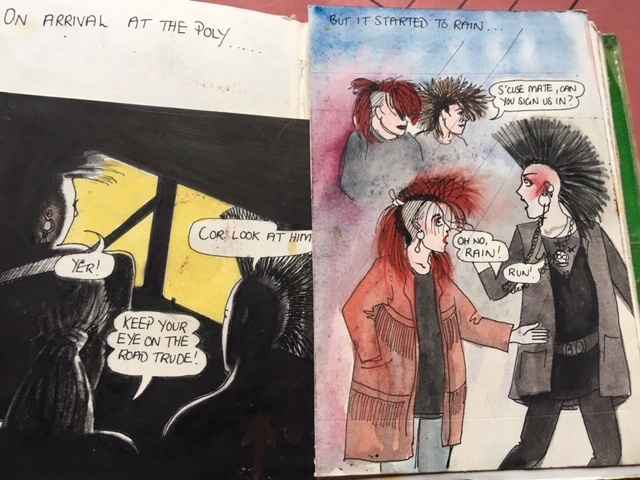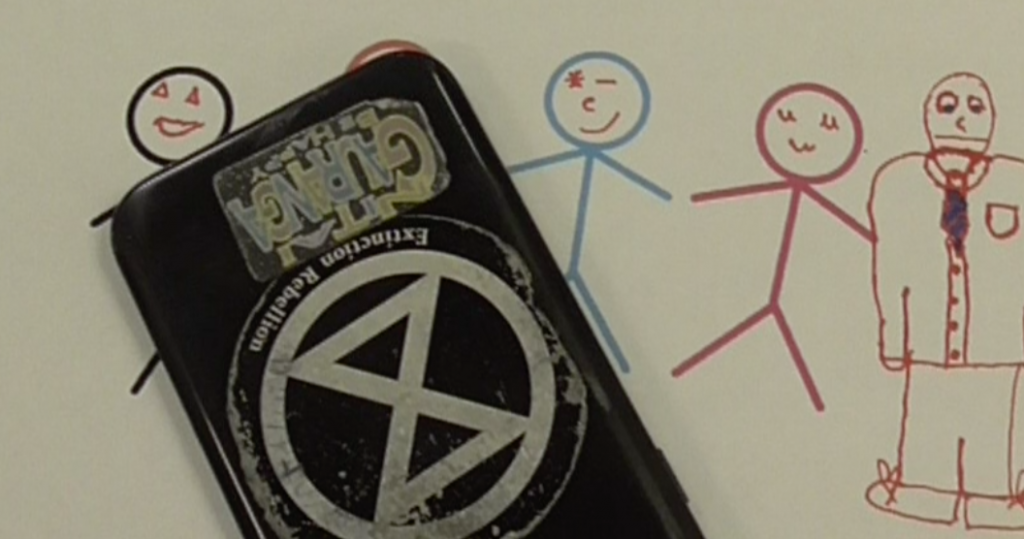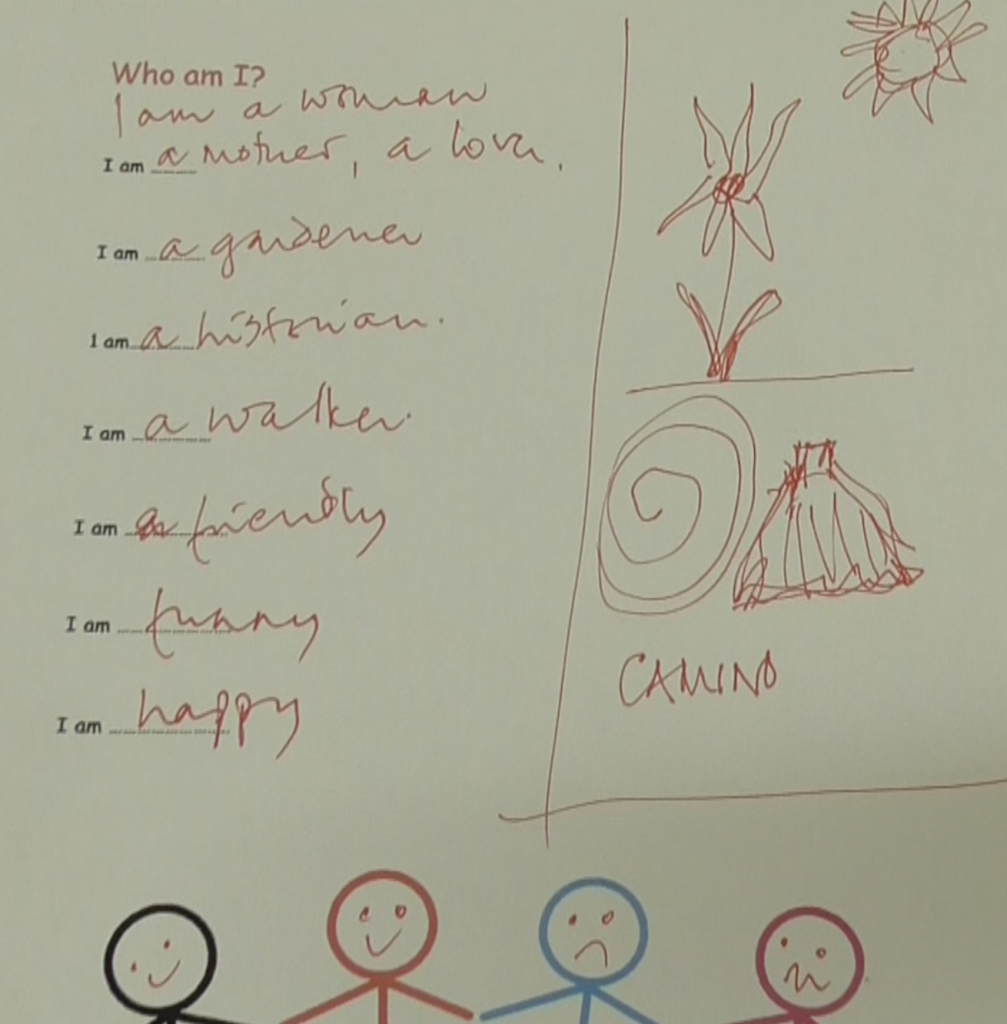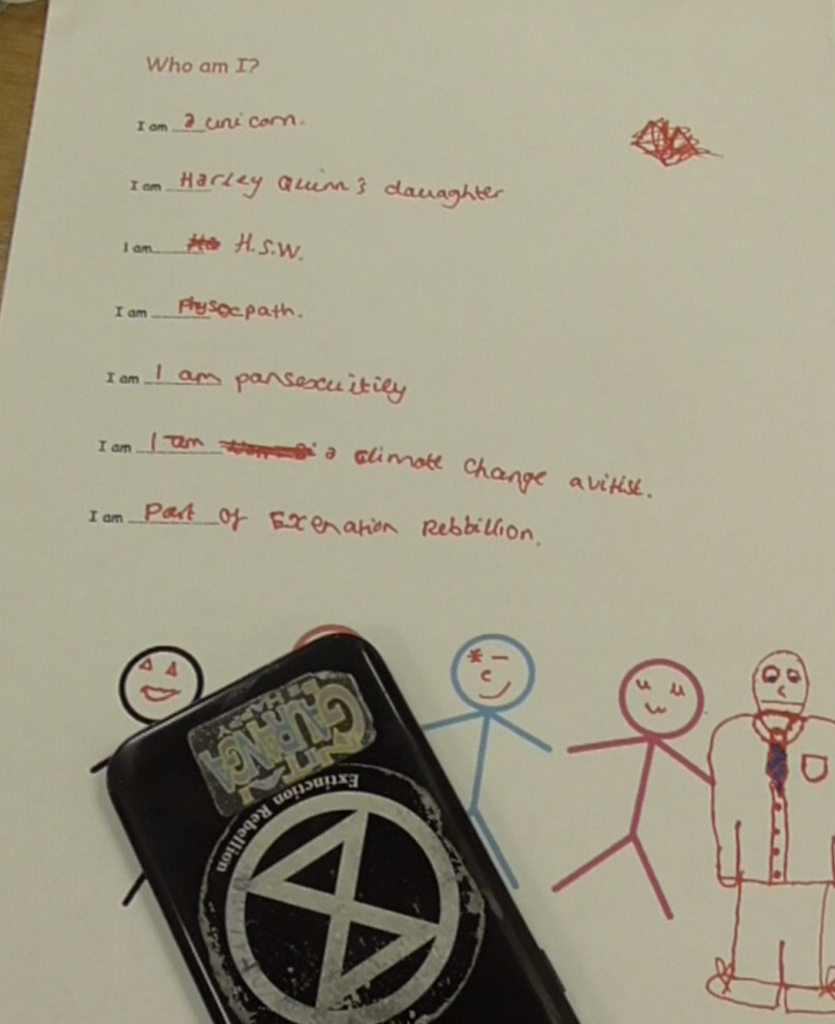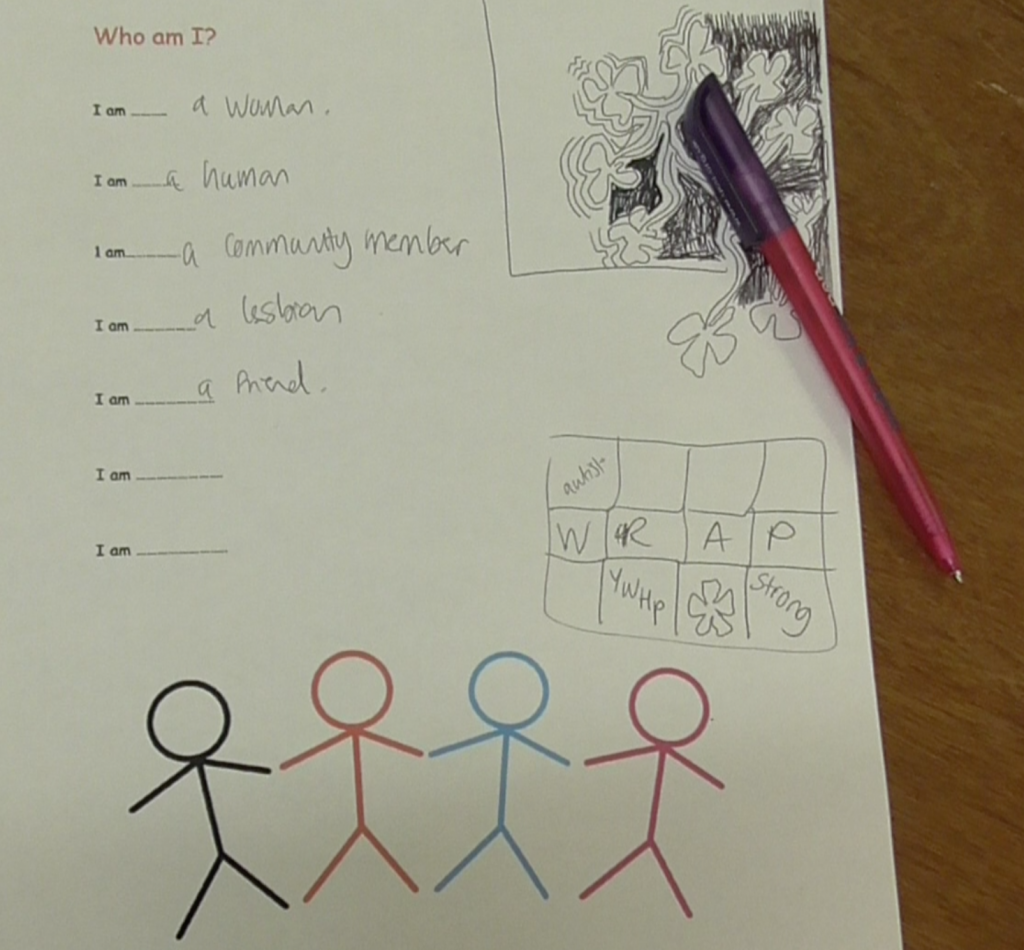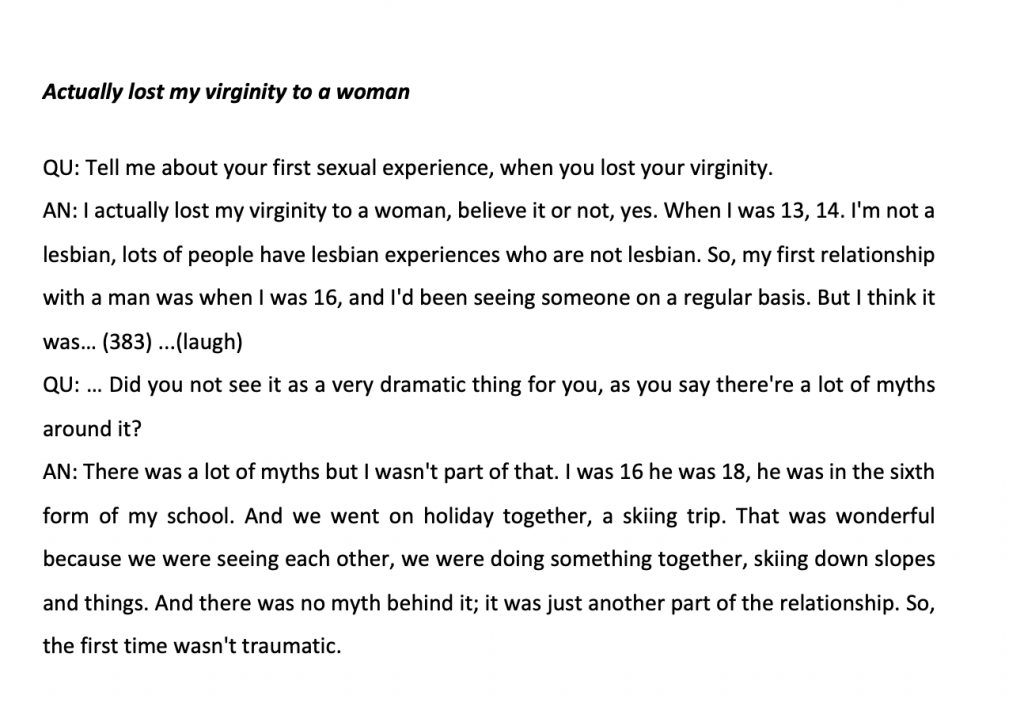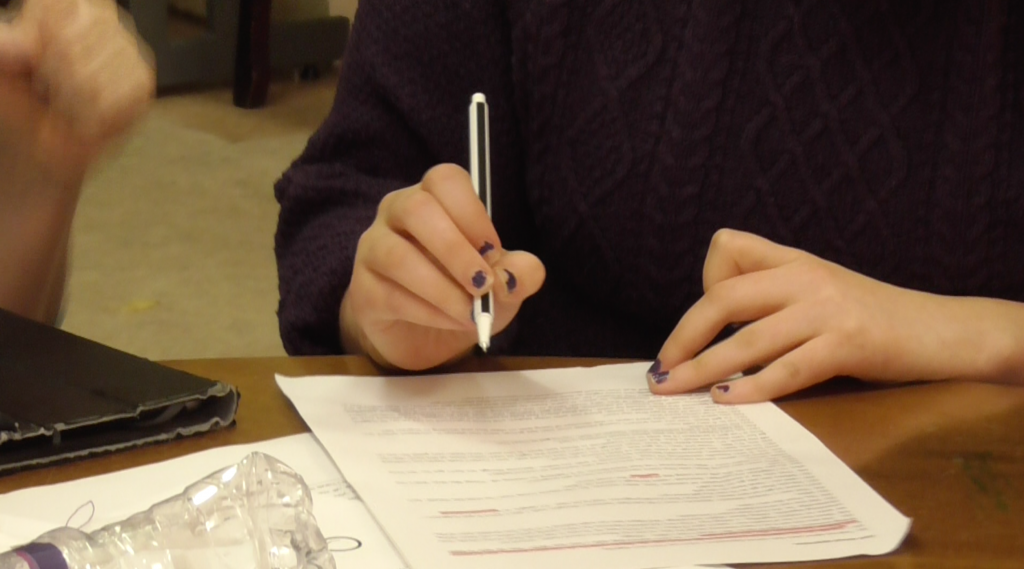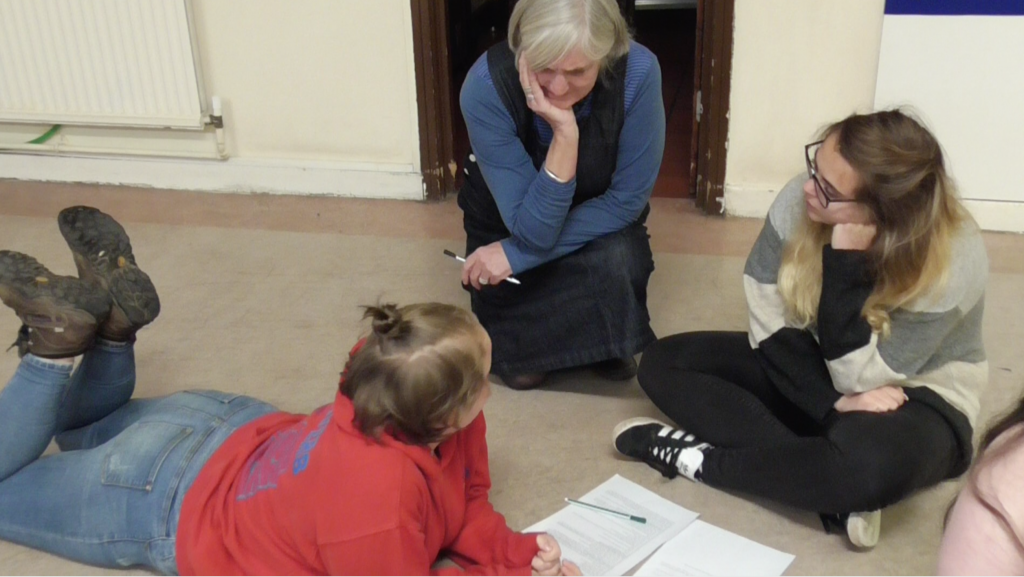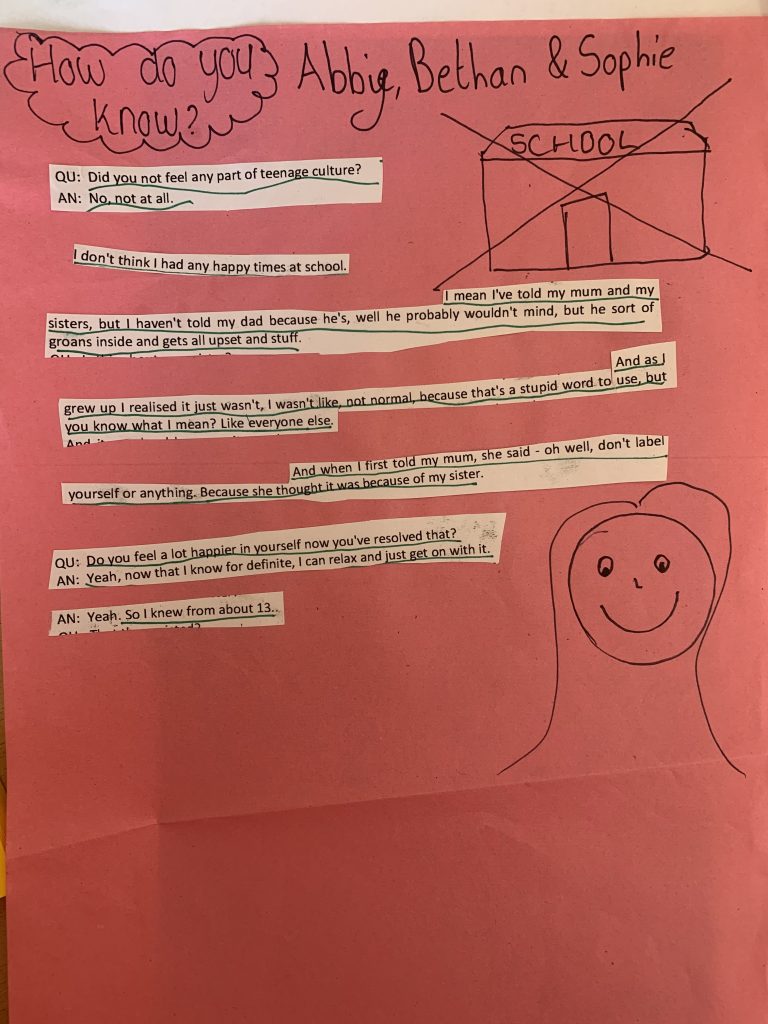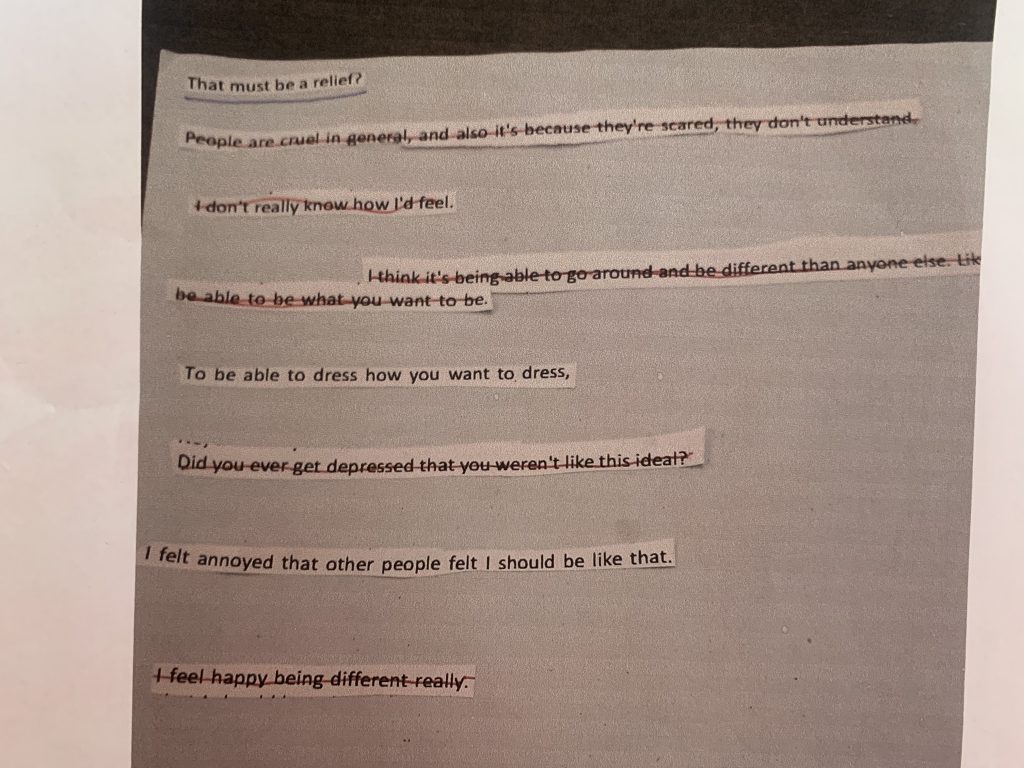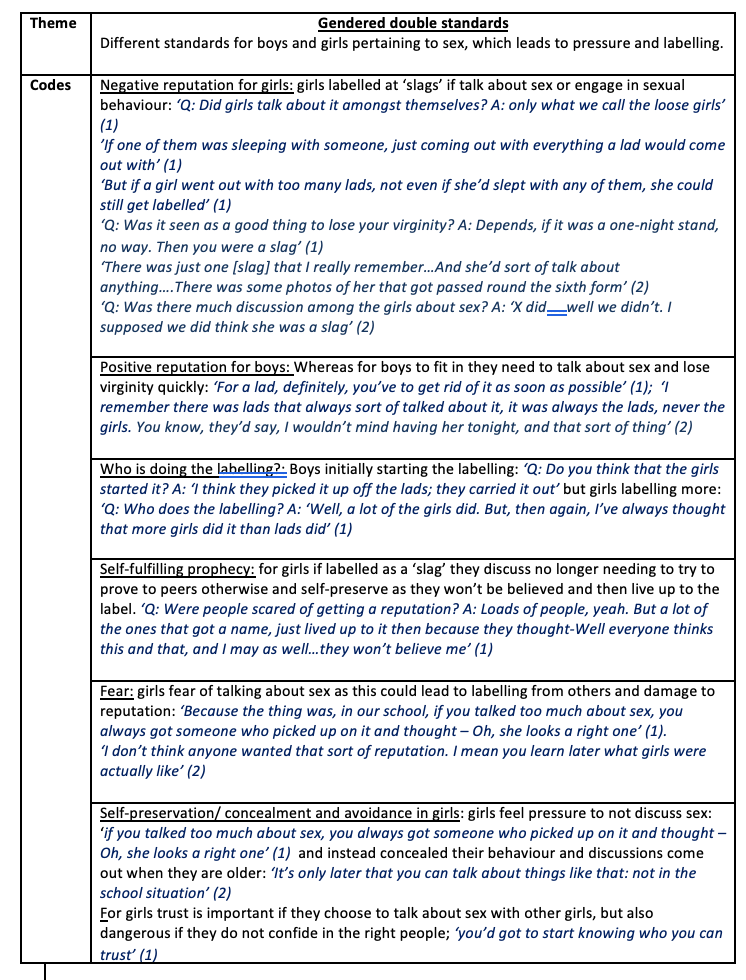Rachel Thomson
The idea of working with a group of drama students came about when re-encountering the original data set and finding and remembering an interview (MAG50) with a young woman studying drama at Manchester University. MAG50 was eager to talk about her own complicated emotional life as well as the ‘false and forced intimacy’ of the drama scene. She shared stories of non consensual sex as well as intense relationships with powerful older men. She also articulated her understanding of the sexual politics of the theatre industry where women may need to be sexually available in order to get work.
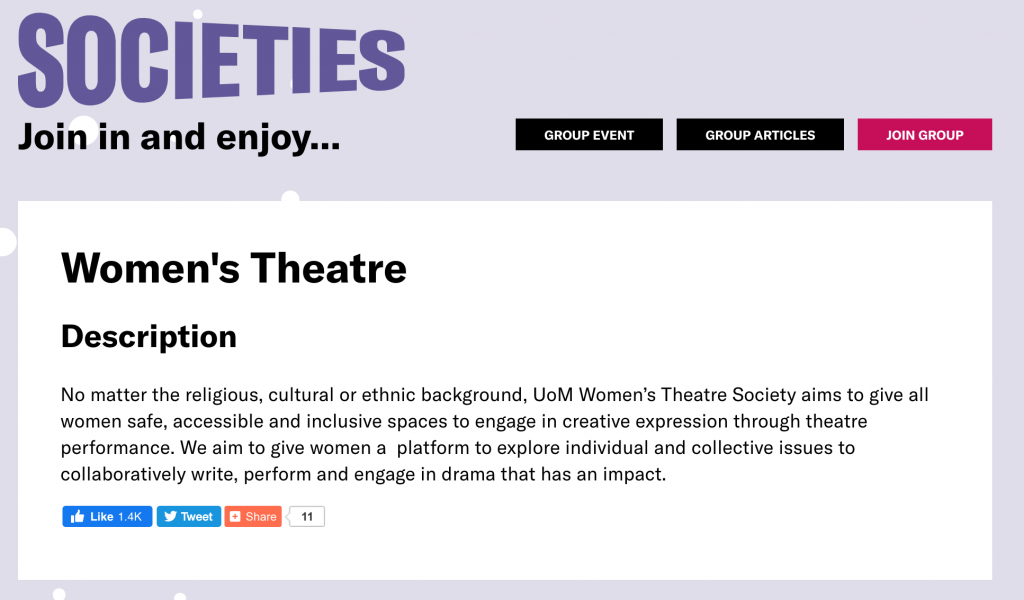
Reading this interview in a new historical moment framed by the #metoo movement and the exposure of predatory men within the entertainment and creative industries encouraged me to take this material to todays drama students at Manchester University. I wanted to find out if they would be interested in the material and in collaborating in a project of reanimation that would help us think about social change and continuity. We began by making contact with Alison Jeffers in the drama dept at MU who put us in contact with Elena and Lea – two third year students who had recently taken over the stewardship of the Women’s Theatre Society – a student led theatre society for women.
The work began. We shared two further transcripts with the group – both interviews with young women who were drama students at UM in 1989. After 6 weeks of workshopping the material I was able to join them.
Before leaving for Manchester I gathered some memorabilia to take with me – objects from my life at the time the research was done; an old diary, photographs and a copy of my handwritten Masters dissertation on Women and AIDS, which lead to me being part of the WRAP project. I also read MAG50 again on my way to Manchester as well as reading my dissertation. Through these objects I tried to remember my 23 year old self. When I met the young women that evening they jumped, as if they had seen a ghost. I understood that they had got to know a version of me in the interviews and that meeting the 53 year old me was strange for them. I tried to explain that it was strange for me too.
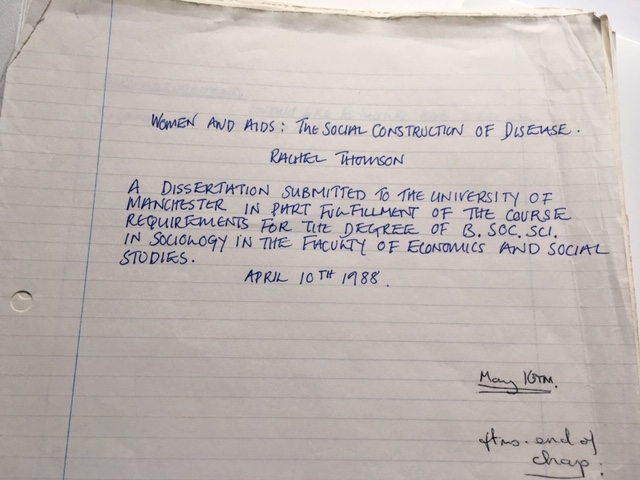
I shared my memorabilia and to began a Q&A session that lasted over an hour where we did the work of weaving feminist webs between our shared relationship with this interview and our shared co-presence, uncannily in the very building where the original research had taken place. There were a number of moments in this conversation when connections were made between the old me and the new me, between the young women and MAG50, between 1988 and 2019 in that building. I felt like we were doing a collaborative analysis.
Making sense of the boldness of the sexual discourse.
A burning question for the group was how it was possible for the original conversation to have taken place. It was so bold, intimate, open. At first I thought that they were telling me that from their perspective the research was unethical, that the questions too direct, transgressive. But over the discussion I began to understand that they were curious about how such a discourse became possible. They wanted to know about the staging of the interview and the lead up to the conversation (did they know what would be asked?) and about whether I had supervision to prepare me for the ‘heaviness’ of the discussion. It became evident that having a conversation like this now would be very difficult, constrained by concerns about safeguarding, consent and triggering. But rather than chastising me for bad practice I discovered that the young women were eager to re-enact this way of talking.
Rachel: I think that’s really interesting because I think now we would see a study like this through the prism of mental health and it absolutely wasn’t how we looked at it. So, we would now … I don’t know, tell me what you think, I think we would think about triggers things like that, is it triggering? Could you ask that because that might…? Whereas in a way this was the stuff that happened before that whole way of looking at the world came about, this was much more political I think in a straightforward way, well nothing is straightforward is it? But it was much more about trying to say, “That’s not fair.” Or, “Put that into words; what words does that…?” Because we didn’t really have any vocabulary to talk about sex, people didn’t know what to call bits of their body, they didn’t know how to name power, and I say ‘they’ I would speak of myself as well, you know, like we didn’t really have a vocabulary to describe any of these things so it was the basic work.
Together we worked out the relationships between now (2019) and a time (1989) where speaking out about sex and about power was a project of making the personal political, naming the unnamed and developing a new vocabulary. As threads connected the two moments in time the young women articulated that this formed a necessary foundation for a future culture that is saturated in the knowledge of sexual violence. Yet we also mused that something had been lost in the reframing of sex from a political to a more psychological register. We realised that there is a complicated new kind of silencing that reigns in the young women’s worlds in which sex is both seen as casual and no big deal, as well as too much trouble, too difficult and too important.
#metoo
At the end of the session I asked them about the #metoo movement and about the sexual politics of the drama world and the entertainment industry. Again the young women told a story of unevenness and contradiction. In many ways things are better for young women – there are pockets of feminist practice and areas of the business dominated by women (documentary film was given as an example). Yet elsewhere in the industry things are worse then they have ever been, with market forces determining what it valued and valuable. An actress still has to rely on her body and her youth. It is not sexism as such that is to blame, but the laws of the industry and the preferences of the audience. We talked about women withdrawing from exposed patriarchal spaces, deciding that it is just ‘too much’ and not worth it. I began to understand what they were trying to tell me about contemporary sexuality and to grasp how what came before is part of what is now in a way that escapes the linear narratives of progress and decline that stand in the way of generational connection.
Urgent mini interviews
The evening culminated in an urgent series of mini interviews, with young women choosing fragments from one of the three interviews to revoice and discuss or simply asking me to ask them questions like I had asked the WRAP young women. The interviews were double documented – I recorded them as ‘data’ for our reanimating project and Elena recorded them as useful material that the group might use for devising a performance.
I learned a lot from these conversations: that it was still hard to be a virgin; that it was hard to find a ‘middle ground’; that the protection of men and families is vital for many people still; that loving oneself can be harder than loving someone else. It was an overwhelming and moving experience that I am in the midst still of understanding. These re-enactments were the frenzied culmination of a long slow process of engagement which I would like to think of as a single method spread out in time and space and certainly a kind of co-production that we both documented and made our own.
Watching the performance several months later I could see how strands of our conversations in the workshop had been worked with creatively and brought to life through performance. Although the performance did contain extracts from the three interviews, reperformed by the young women, the focus was on the 2019 young women’s stories. In the discussion after the show the young women told us that engaging with the material gave them permission and a desire to tell their own stories and to think that someone out there might be interested in listening.
Watch the live performance of The Reanimating Project.

